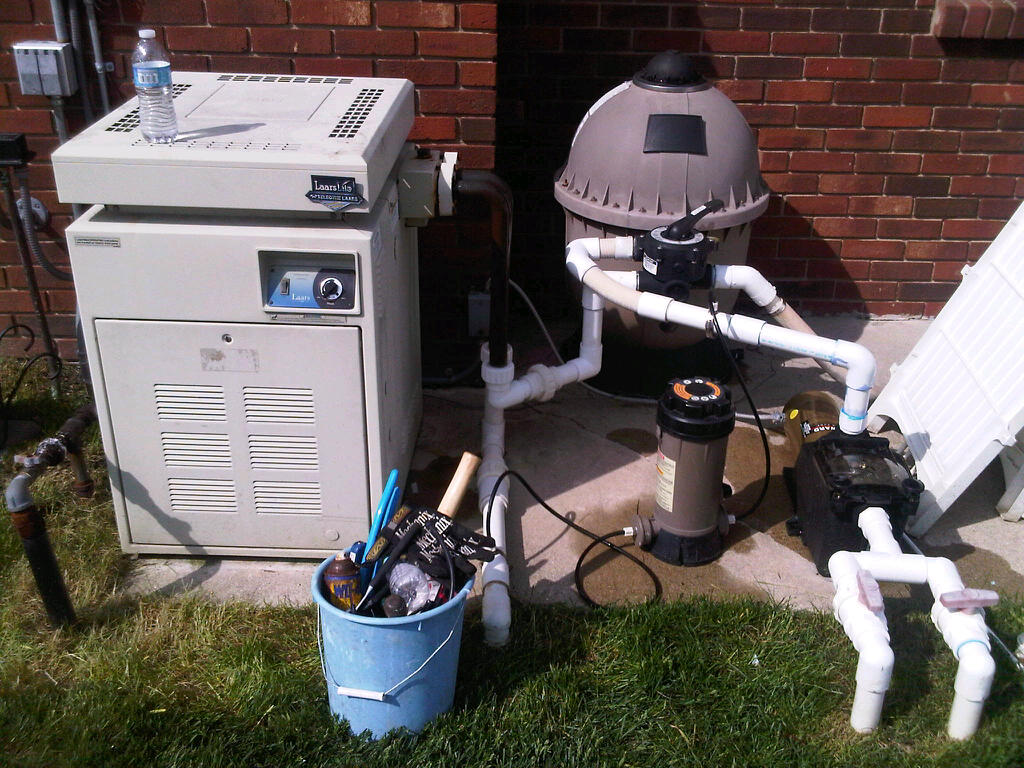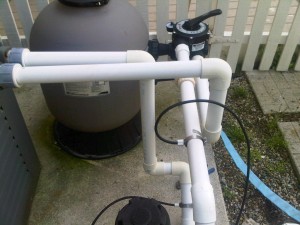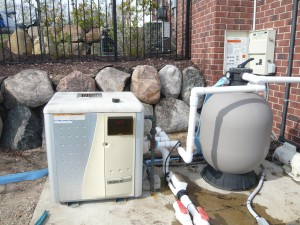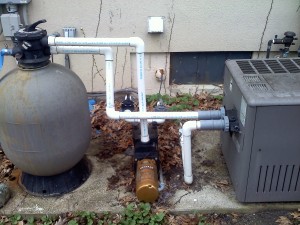
Many pool owners are intimidated by the multi-port valve (aka the spinny thing with the handle) on the pool system because they mistakenly think that it’s highly technical, and a difficult job. In fact, maintaining and taking care of your pool’s multi-port valve is not only simple, but it’s also necessary to ensure that your pool continues to operate and function in the manner that you need it to. Multi-port valves are also called filter control valves, the backwash valve, or the Vari-Flo valve; and they can be found near the pump and the filter for your swimming pool.
Depending on your system, you might have a top-mounted multiport valve meaning it’s located on the top of your filter. The alternative is that you have a side-mounted system, meaning the multiport is located on the side of your filter. Some swimming pool systems have a push/pull valve instead of a multiport (if you have one of these, we have many reasons you may want to consider having a multi-port plumbed in – call us, we can chat about this.)

The most important thing to know before we go any further is that you always need to turn your system off if you are going to move the handle on the multiport valve. If you move the handle during operation, you can blow the spider gasket on the inside out of place with the force of the water in the system. So don’t do that. Okay?
The next thing you have to do is identify the different functions and settings that are on your multi-port valve, so that you can know what your multi-port valve can do. One of these settings will most likely be a filter setting. This setting will pull in water from the pool, filter it, and then send it back into the pool.

Another setting on the multi-port valve will be the backwash setting; this flushes out the filter. By flushing out the filter, the backwash setting will take the particles that are clogging up the filter and will send them back out the waste hose. When the filter becomes very clogged, sometimes it is necessary to rotate between the rinse setting and the backwash setting on the multi-port valve, until the water runs clean. Some multi-port valves also come with a waste setting. This setting takes the water directly to the drain, instead of putting it back out into the pool. This can be much more convenient for pool owners.

A rinse setting may also appear on the multi-port valve. This setting will run clean water through the pipes of the filter, cleaning them and clearing away any of the debris that may have been knocked loose during the backwash.
A multi-port valve is essential to the maintenance and the regular cleaning of any pool. Maintaining the multi-port valve is important to not only keep the filter and water clean, but also to ensure the smooth overall operation of the pool. Knowing how to keep the multi-port valve in good working condition is not difficult and shouldn’t be considered an intimidating task.
If you have questions about the proper operation of your multiport valve, or need it serviced, we can help.












I had my multi port valve replaced last year and it was moving fine until yesterday.
I have not tried to move the handle whilst the pump was on.
The handle will not move from the filter position?
Please can you advise me
Thanks for your question. You should always make sure that you turn your system off before you move your multiport valve handle. If it was fine until yesterday, and you didn’t have something fall on your multiport and cause your handle to stick, it should move. Just try to push down and rotate. If it won’t move, you may want to take the screws out of it (if it is the style that has them) and take the top of the multiport off to see if there is an internal issue or blockage. When you put the swimming pool multiport valve back together, make sure that the inner spider gasket is lined up properly, and that your functions, rinse, backwash, filter etc. all go back into exactly the same position as when you took it off.
If the handle still won’t turn and you don’t know what else it may be, call us or another pool company to come out and take a look. They may be able to fix it, or replacing it might be recommended.